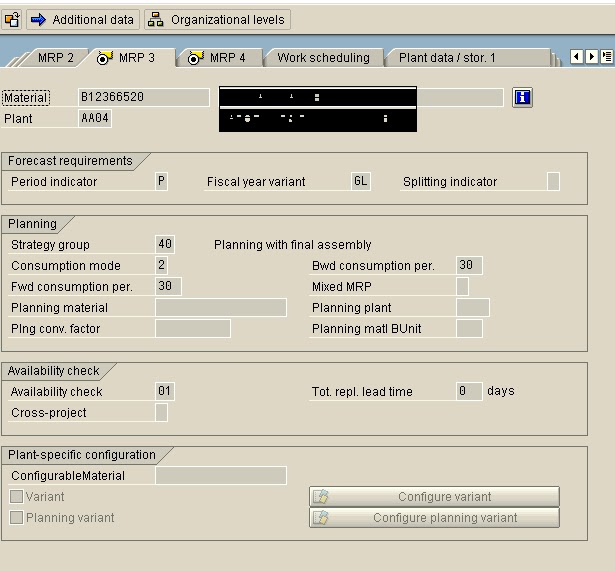MRP 3 View:
The following are the fields in MRP 3 View:
Strategy Group:
A Strategy Group represents the procedure used for planning a material. Primarily for Made to Stock the strategy is “10” in SAP and for Made to Order the Strategy is “20” in SAP.
There are many other strategies in the system other than Made-to-order and Made-to-Stock like
a) Planning with final assembly - Strategy Group or Strategy = 40
This is a made-to-stock scenario where production is not only driven by planned independent requirements set in MD61 for a material, but any shortage in stock which are recognized by the incoming sales orders are also covered by MRP. Therefore the system plans for the quantities entered in planned independent requirement as well as plans for any shortages that may arise because of incoming demand.
In a mere Made-to-stock scenario (Strategy = 10) , the production is only driven by planned independent requirements set in MD61 for a material and any shortage identified by incoming demand does not result in additional procurement proposals created in MRP to cover that shortage.
You can use Strategy - 10, when you know that the forecasted demand is correct and you cannot afford to produce more than that.
You can use Strategy - 40 when you want to accomodate for evergrowing changes in demand and satisfy the shortages not identified by the forecast.
Note - Using Strategy 40 is wise.
b) Make-to-Order - Strategy Group or Strategy = 20
In a make-to-order scenario, the production is initiated upon receipt of an incoming customer requirement, i.e., production is made specifically for the customer requirements.
In this case the production order and the stock is assigned to the customer order avioding any divertions to another customer demand for a similar or same product.
Consumption Modes:
The consumption mode controls the direction on the time axis in which the system consumes requirements.
Backward Consumption period:
Determines how far in the past on the time axis, the system should look for consuming the PIRS (planned independent requirement). The Sales Orders, Dependent Requirements, etc are assigned to & consume the PIR quantities that within this consumption period (before the requirements date
Forward Consumption period:
Determines how far in the future on the time axis, the system should look for consuming planned independent requirement. The Sales orders, Dependent Requirements, etc are assigned to & consume the PIR quantities that within this consumption period (after the requirements date).
Availability Check:
Using this field the system specifies whether and how the system checks availability and generates requirements for materials planning. It specifies which MRP elements the System takes into account (Purchase Orders, Production/Process Orders, etc) during availability check.






















 4932
4932

 被折叠的 条评论
为什么被折叠?
被折叠的 条评论
为什么被折叠?








